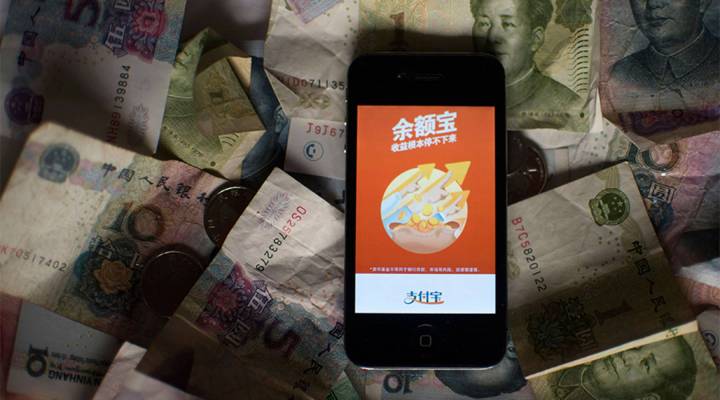
How can mobile payments in China be greater than GDP?
Share Now on:
How can mobile payments in China be greater than GDP?

A listener questioned our story about going cashless in Shanghai — specifically, when we reported $23 trillion worth of mobile payment transactions in China in 2016:
Hey, Jennifer. I heard your story on the radio last night. This statistic seems dubious: pic.twitter.com/Y94Yh6YaYB
— Troy Wolverton (@troywolv) January 16, 2019
Even some of our colleagues here at Marketplace wondered how it was possible for an economy whose GDP that year was $11.19 trillion to tally nearly twice that amount in mobile payments.
It’s entirely possible, according to experts on mobile payments in China. In fact, we underreported the amount of mobile payments.
We got the $23 trillion number from the People’s Bank of China. But it only includes transactions from mobile payment systems from banks and state-backed UnionPay (which includes Chinese Apple Pay, Huawei Pay, Xiaomi Pay, and others.)
Experts we spoke to said we also should have included an additional figure from the PBOC that tracks mobile payments through third-party mobile transaction providers, including WeChat Pay, Alipay, Baidu Wallet, and JD Pay. That brings the total for 2016 to 256.82 trillion yuan, or around $38 trillion.
How can mobile payments exceed a country’s GDP?
Gross domestic product is the measure of the value of finished goods and services in a country. But not every monetary transaction counts.
What counts is the value added by companies or people in a country, said macroeconomist Louis Kuijs, formerly of the World Bank’s China office and now head of Asia research at Oxford Economics.
“The turnover on U.S. financial markets is many, many, many times U.S. GDP,” Kuijs said. “But, in value-added terms, the contribution of the financial sector to GDP is, like, 10 percent or so.”
Consider an example closer to home: Let’s say I have dinner with two friends and the bill comes to 1,200 yuan ($180). I use WeChat Pay to cover the whole bill, then each of my friends uses the same service to pay me 400 yuan ($60). The People’s Bank of China registers a total of 2,000 yuan ($300) in transactions — nearly twice what the dinner cost.
The payments from my friends involve no exchange of goods or services. And transactions like that aren’t included in the calculation of GDP, Kuijs said.
OK, but more than three times GDP?
Our original story focused on third-party mobile-payment platforms, including Alipay and WeChat Pay.
They’re used for a wide range of financial transactions. It’s common for small businesses to use them to pay salaries to their workers and invoices to other businesses.
Consumers in China use mobile payments to pay for goods and services, utility bills, traffic fines, and hospital bills. They transfer money to friends. They use mobile payments to make investments. And to make payments on mortgages, car loans, and personal loans.
“Remember that pure financial transactions — repaying loans, buying stock — are not part of GDP, because no good or service is being produced,” said economics blogger and author Timothy Taylor. “They are just a transfer of ownership of a financial asset.”
“If mobile transactions in China are being used for financial transactions, the number could go up a lot in a hurry,” he said.
There’s a lot happening in the world. Through it all, Marketplace is here for you.
You rely on Marketplace to break down the world’s events and tell you how it affects you in a fact-based, approachable way. We rely on your financial support to keep making that possible.
Your donation today powers the independent journalism that you rely on. For just $5/month, you can help sustain Marketplace so we can keep reporting on the things that matter to you.












